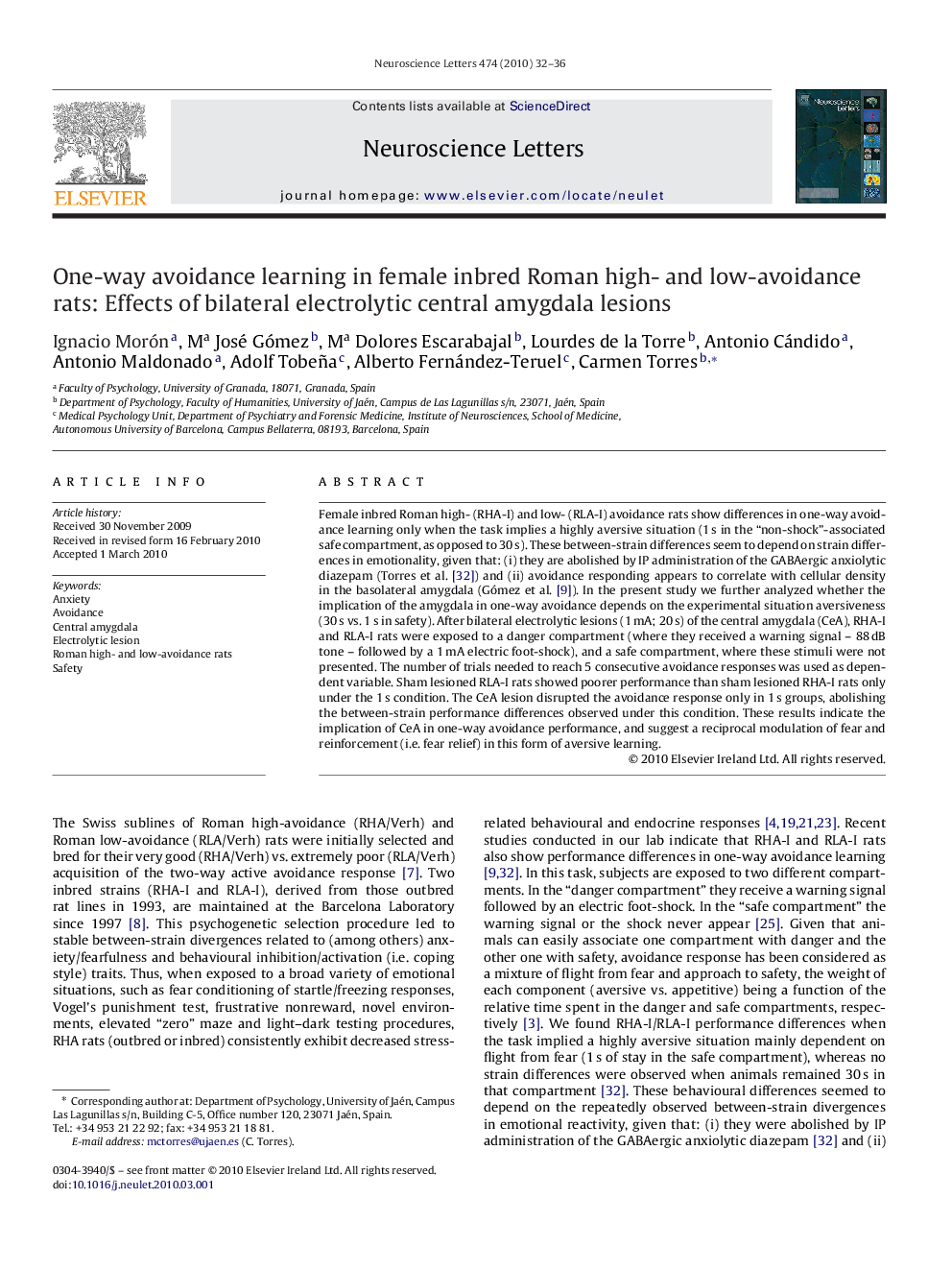| کد مقاله | کد نشریه | سال انتشار | مقاله انگلیسی | نسخه تمام متن |
|---|---|---|---|---|
| 4346581 | 1296795 | 2010 | 5 صفحه PDF | دانلود رایگان |
عنوان انگلیسی مقاله ISI
One-way avoidance learning in female inbred Roman high- and low-avoidance rats: Effects of bilateral electrolytic central amygdala lesions
دانلود مقاله + سفارش ترجمه
دانلود مقاله ISI انگلیسی
رایگان برای ایرانیان
کلمات کلیدی
موضوعات مرتبط
علوم زیستی و بیوفناوری
علم عصب شناسی
علوم اعصاب (عمومی)
پیش نمایش صفحه اول مقاله

چکیده انگلیسی
Female inbred Roman high- (RHA-I) and low- (RLA-I) avoidance rats show differences in one-way avoidance learning only when the task implies a highly aversive situation (1Â s in the “non-shock”-associated safe compartment, as opposed to 30Â s). These between-strain differences seem to depend on strain differences in emotionality, given that: (i) they are abolished by IP administration of the GABAergic anxiolytic diazepam (Torres et al. [32]) and (ii) avoidance responding appears to correlate with cellular density in the basolateral amygdala (Gómez et al. [9]). In the present study we further analyzed whether the implication of the amygdala in one-way avoidance depends on the experimental situation aversiveness (30Â s vs. 1Â s in safety). After bilateral electrolytic lesions (1Â mA; 20Â s) of the central amygdala (CeA), RHA-I and RLA-I rats were exposed to a danger compartment (where they received a warning signal - 88Â dB tone - followed by a 1Â mA electric foot-shock), and a safe compartment, where these stimuli were not presented. The number of trials needed to reach 5 consecutive avoidance responses was used as dependent variable. Sham lesioned RLA-I rats showed poorer performance than sham lesioned RHA-I rats only under the 1Â s condition. The CeA lesion disrupted the avoidance response only in 1Â s groups, abolishing the between-strain performance differences observed under this condition. These results indicate the implication of CeA in one-way avoidance performance, and suggest a reciprocal modulation of fear and reinforcement (i.e. fear relief) in this form of aversive learning.
ناشر
Database: Elsevier - ScienceDirect (ساینس دایرکت)
Journal: Neuroscience Letters - Volume 474, Issue 1, 19 April 2010, Pages 32-36
Journal: Neuroscience Letters - Volume 474, Issue 1, 19 April 2010, Pages 32-36
نویسندگان
Ignacio Morón, Ma José Gómez, Ma Dolores Escarabajal, Lourdes de la Torre, Antonio Cándido, Antonio Maldonado, Adolf Tobeña, Alberto Fernández-Teruel, Carmen Torres,